
Hi GPODers!
We’re continuing our deep-dive into magnolias with Allyson Levy of Hortus Arboretum and Botanical Gardens today. Be sure to check out Part 1 if you missed it yesterday, as it gives a great introduction to magnolias and tells the story of why these beautiful trees hold a special meaning to Allyson. If you’re ready to see more of the spectacular array of diverse magnolias that call Hortus home, keep on scrolling.
The genus magnolia is one of only two genera in the magnolia family (Magnoliaceae); the other is tulip poplar (Liriodendron spp.), which has two species, while there are about 220 species of magnolias. Thank you to all the botanists and breeders responsible for hybridizing the different species and cultivars. Because of their efforts, there is a gorgeous variety of flower colors, sizes, and shapes.
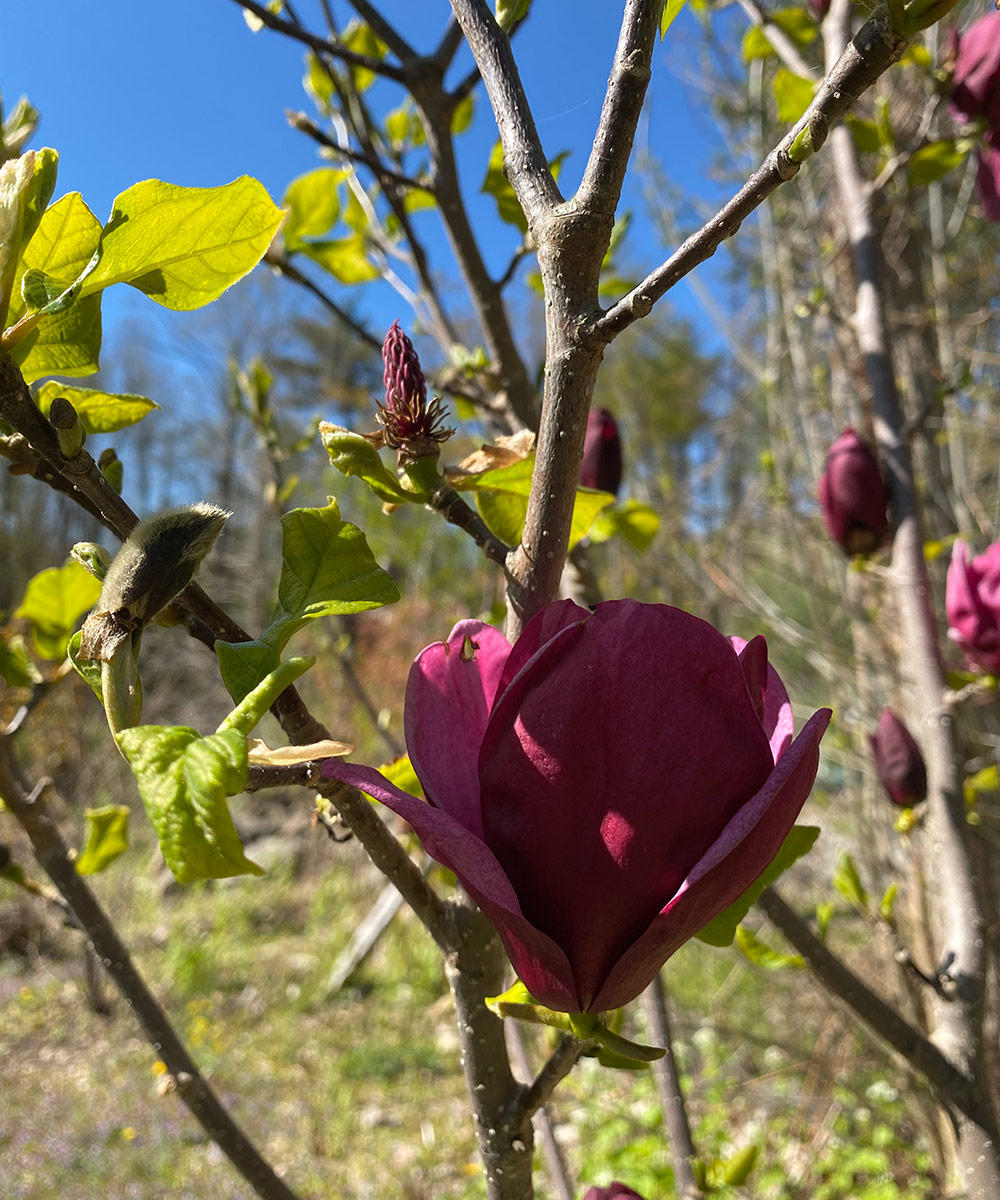 Flowers range from full tulip-like blooms on Genie magnolia (M. × ‘Genie’, Zones 4–9) (above) to trees that produce floppy flowers the size of a dinner plate like bigleaf magnolia (M. macrophylla, Zones 5–8). Others, like Siebold’s magnolia (M. sieboldii, Zones 6–8), have small upside-down facing flowers that invite a closer view, even if it’s on your knees, to look up at them.
Flowers range from full tulip-like blooms on Genie magnolia (M. × ‘Genie’, Zones 4–9) (above) to trees that produce floppy flowers the size of a dinner plate like bigleaf magnolia (M. macrophylla, Zones 5–8). Others, like Siebold’s magnolia (M. sieboldii, Zones 6–8), have small upside-down facing flowers that invite a closer view, even if it’s on your knees, to look up at them.
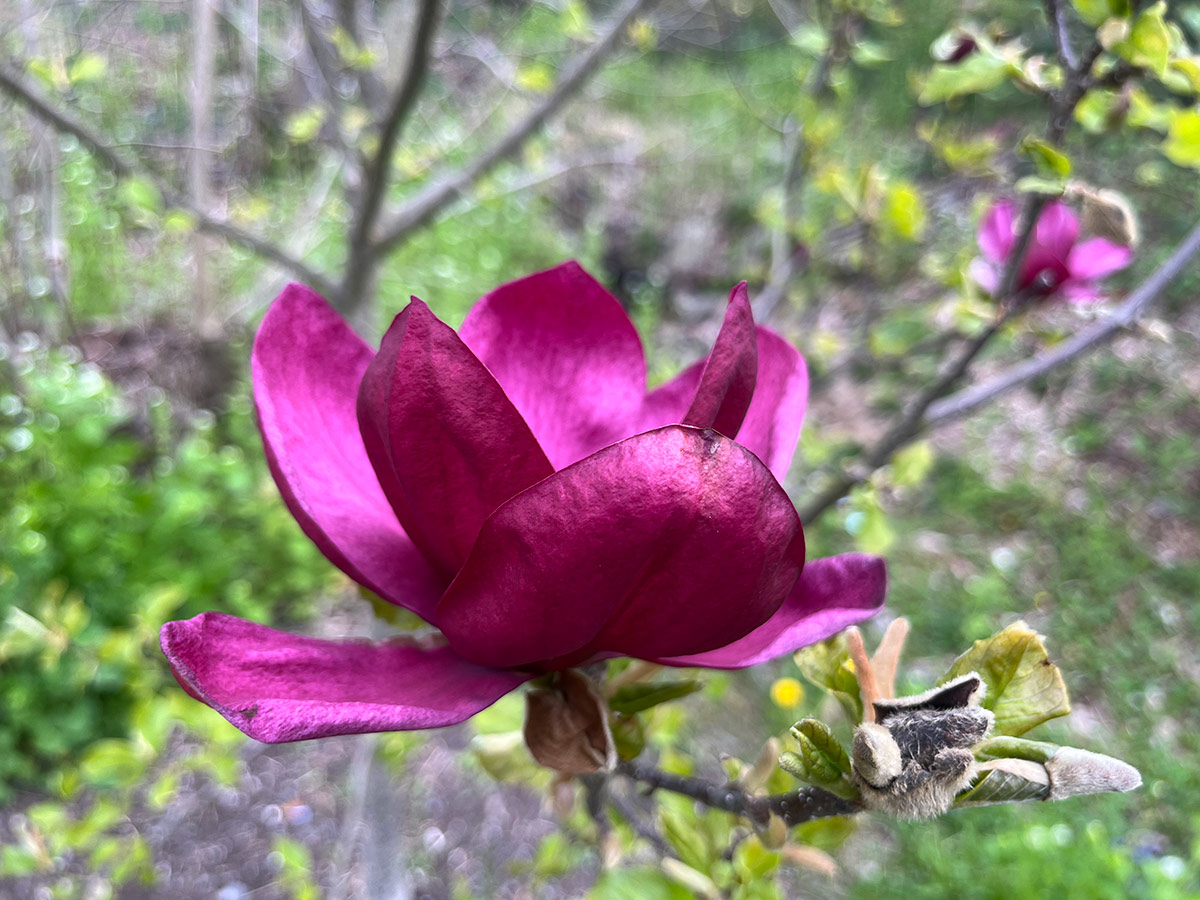 ‘Genie’ displaying beautiful cup-like, rich maroon colored flowers.
‘Genie’ displaying beautiful cup-like, rich maroon colored flowers.
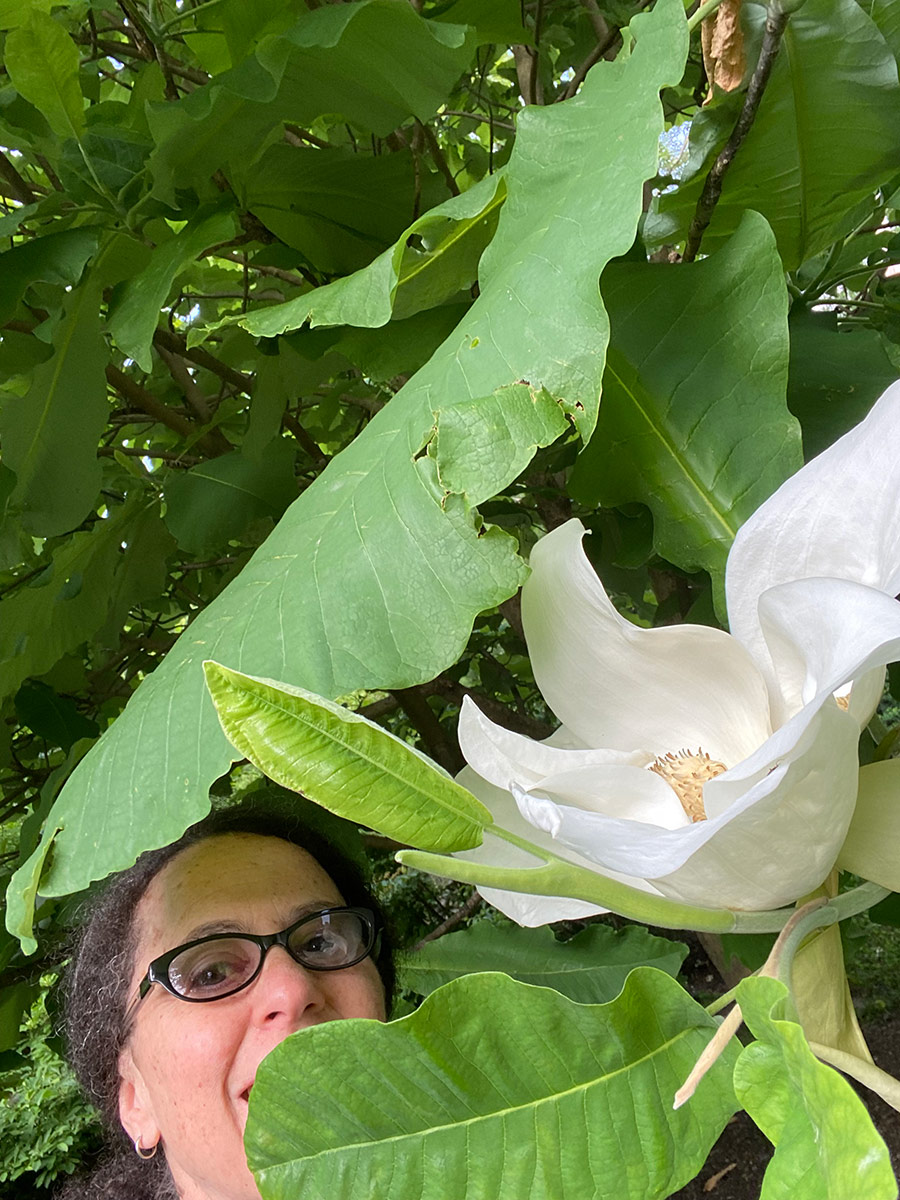 Using me for scale, one can easily see why the common name for this native tree is bigleaf magnolia. It could also be bigflower magnolia, too!
Using me for scale, one can easily see why the common name for this native tree is bigleaf magnolia. It could also be bigflower magnolia, too!
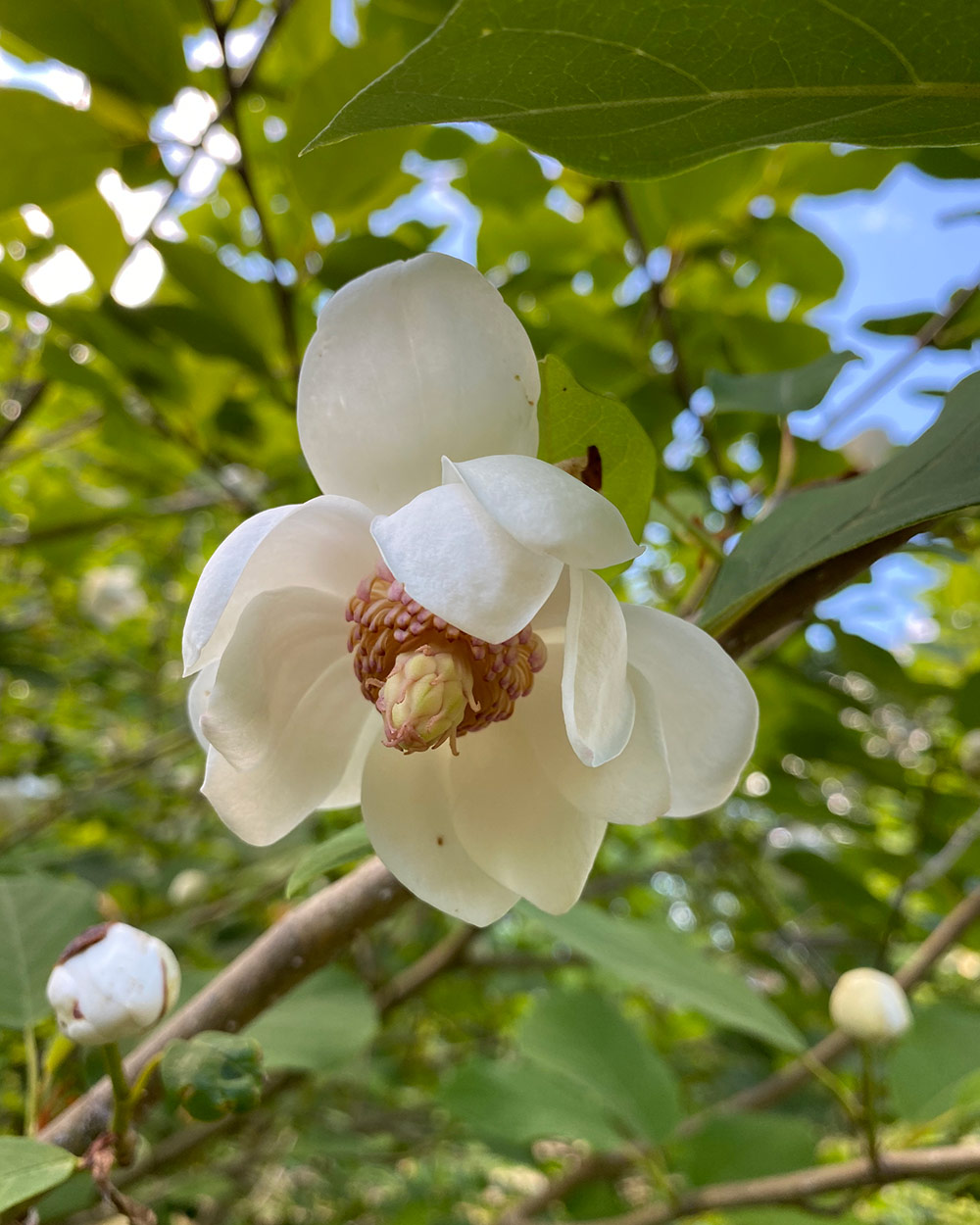 Magnolia sieboldi has small downward-facing flowers throughout most of summer.
Magnolia sieboldi has small downward-facing flowers throughout most of summer.
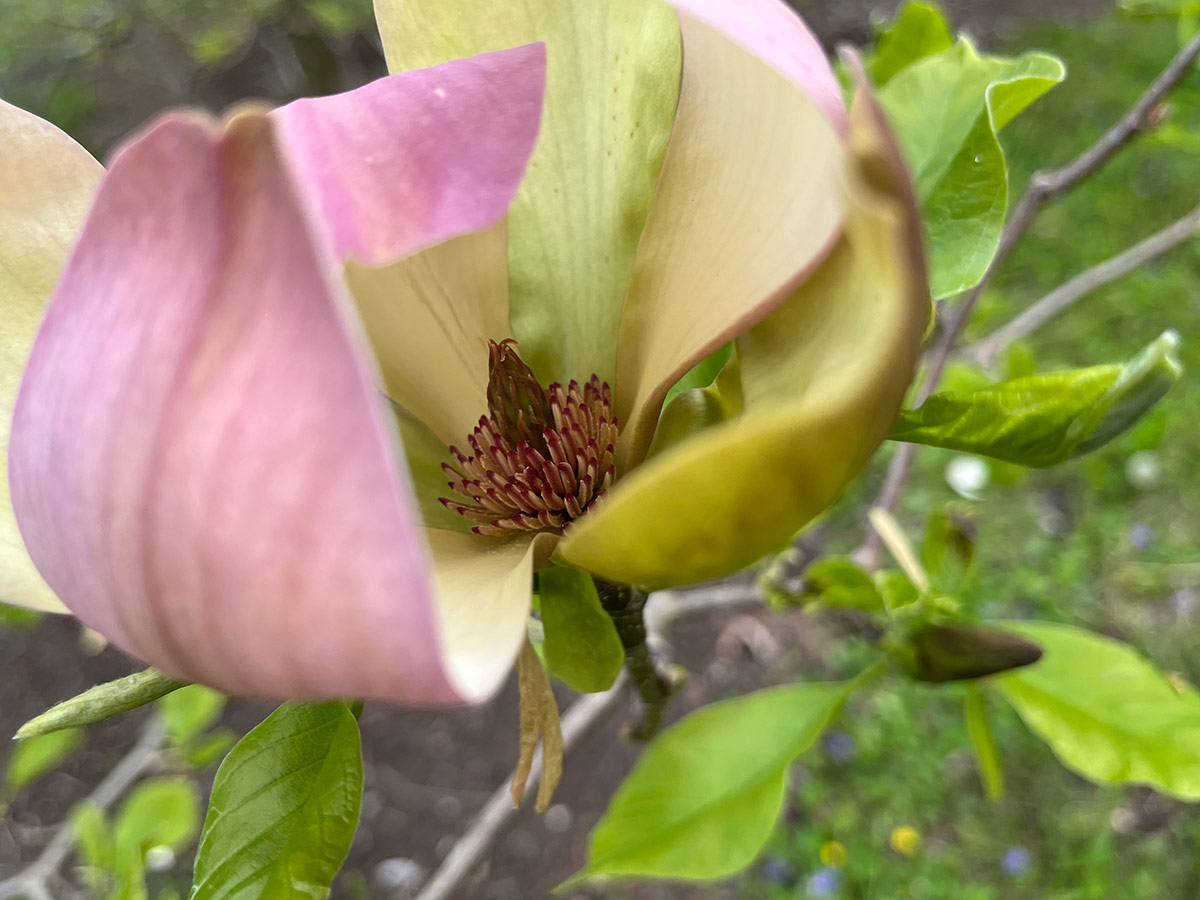 Breeding has also produced a wide color palette, with solid colors of whites, yellows, pinks, reds, and purples. Many magnolia species and hybrids are also stained with multiple colors, like the slow-growing (but so worth it) Woodsman magnolia (M. × brooklynensis ‘Woodsman’, Zones 5–9) (above). This tree starts with very dark purple, almost black flower buds, which then opens to reveal pinks, yellows, and purple tepals all at the same time.
Breeding has also produced a wide color palette, with solid colors of whites, yellows, pinks, reds, and purples. Many magnolia species and hybrids are also stained with multiple colors, like the slow-growing (but so worth it) Woodsman magnolia (M. × brooklynensis ‘Woodsman’, Zones 5–9) (above). This tree starts with very dark purple, almost black flower buds, which then opens to reveal pinks, yellows, and purple tepals all at the same time.
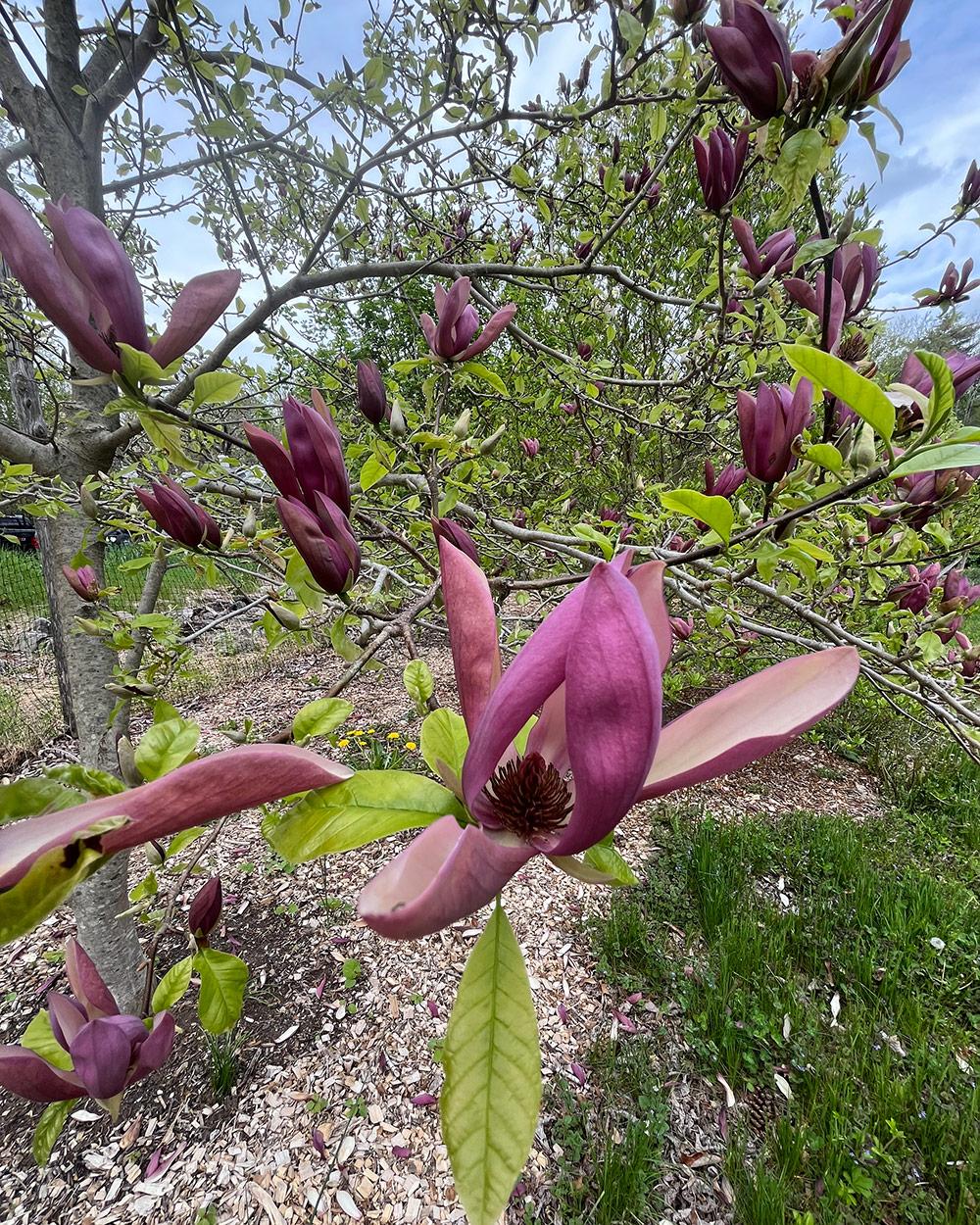 Compared to ‘Black Beauty’ magnolia (M. × brooklynensis ‘Black Beauty’, Zones 5–9) that produces very dark, almost black flower buds but dark purple flowers.
Compared to ‘Black Beauty’ magnolia (M. × brooklynensis ‘Black Beauty’, Zones 5–9) that produces very dark, almost black flower buds but dark purple flowers.
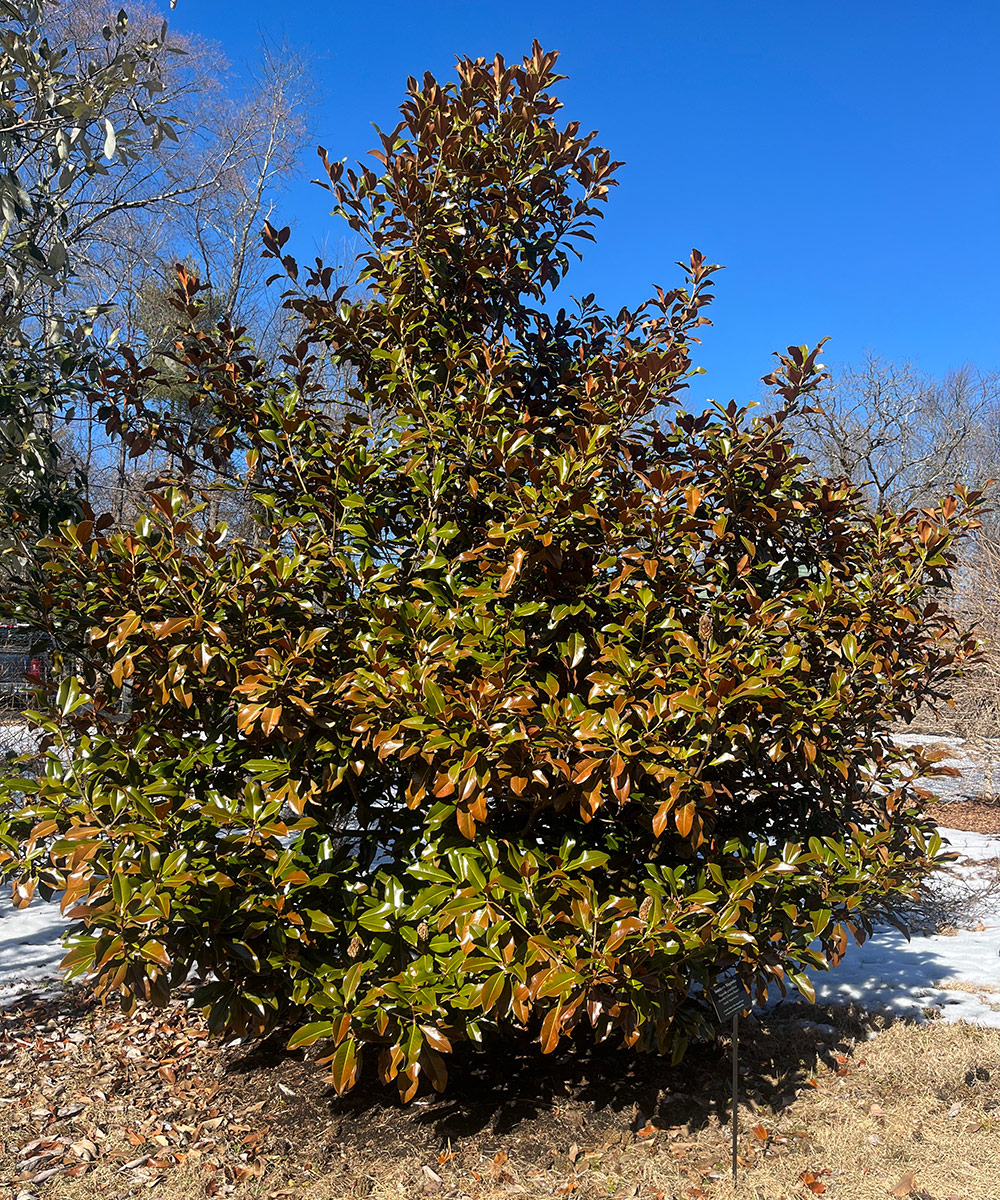 All magnolias have alternate, entire (smooth-edged) leaves, but that’s pretty much where the similarities end. Leaves vary from hairy to smooth and can be small or huge. Bigleaf magnolia trees produce the largest simple leaf in North America, occasionally spanning up to three feet! While some magnolias are deciduous, others produce leaves that remain on the tree throughout winter, such as the Bracken’s Brown Beauty magnolia (M. grandiflora ‘Bracken’s Brown Beauty’, Zones 5–9) (above), with glossy dark green upper leaves and a stunning brown felted underside, like a miniature fuzzy blanket for the leaf’s bottom.
All magnolias have alternate, entire (smooth-edged) leaves, but that’s pretty much where the similarities end. Leaves vary from hairy to smooth and can be small or huge. Bigleaf magnolia trees produce the largest simple leaf in North America, occasionally spanning up to three feet! While some magnolias are deciduous, others produce leaves that remain on the tree throughout winter, such as the Bracken’s Brown Beauty magnolia (M. grandiflora ‘Bracken’s Brown Beauty’, Zones 5–9) (above), with glossy dark green upper leaves and a stunning brown felted underside, like a miniature fuzzy blanket for the leaf’s bottom.
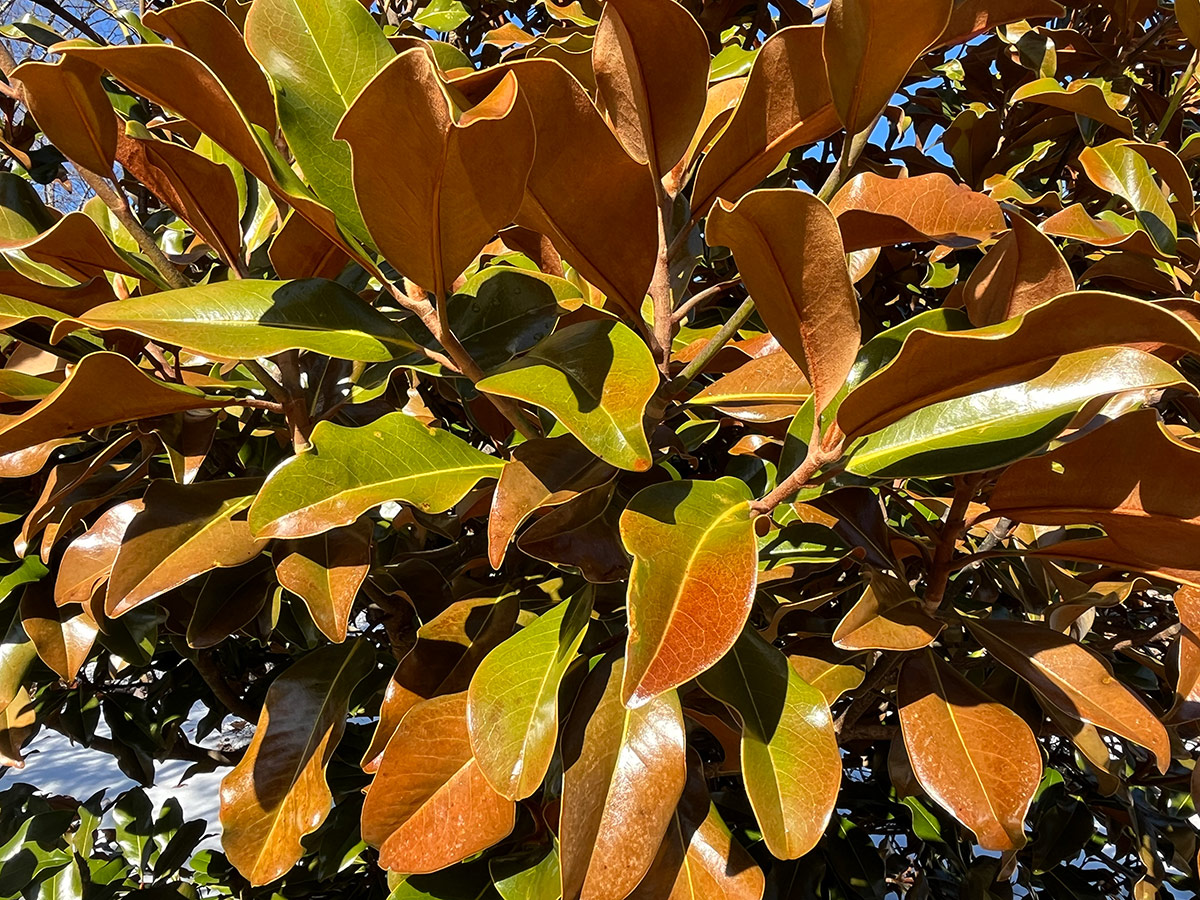 The glorious coloration of the evergreen leaves on the Southern magnolia ‘Bracken’s Brown Beauty’. (Photo taken February 1st, 2025.)
The glorious coloration of the evergreen leaves on the Southern magnolia ‘Bracken’s Brown Beauty’. (Photo taken February 1st, 2025.)
Thank you so much for another educational and inspiration submission, Allyson! As we inch closer to spring, I eagerly anticipate the first bursts of color that so many flowering trees give us early in the season. Your information has given me a whole new perspective on the magnolias I will soon seen in full bloom at the edge of driveways near me.
Do you have a flowering tree (or a few) that you can’t wait to see put on its springtime show? If you have pictures from last year’s display, let’s get a taste of spring color on the blog before we have to wait to see it in real life any longer! Share your spring garden photos from last year by following the directions below, or send me a DM on Instagram: @agirlherdogandtheroad.
Have a garden you’d like to share?
Have photos to share? We’d love to see your garden, a particular collection of plants you love, or a wonderful garden you had the chance to visit!
To submit, send 5-10 photos to [email protected] along with some information about the plants in the pictures and where you took the photos. We’d love to hear where you are located, how long you’ve been gardening, successes you are proud of, failures you learned from, hopes for the future, favorite plants, or funny stories from your garden.
Have a mobile phone? Tag your photos on Facebook, Instagram or Twitter with #FineGardening!
Do you receive the GPOD by email yet? Sign up here.
Fine Gardening Recommended Products
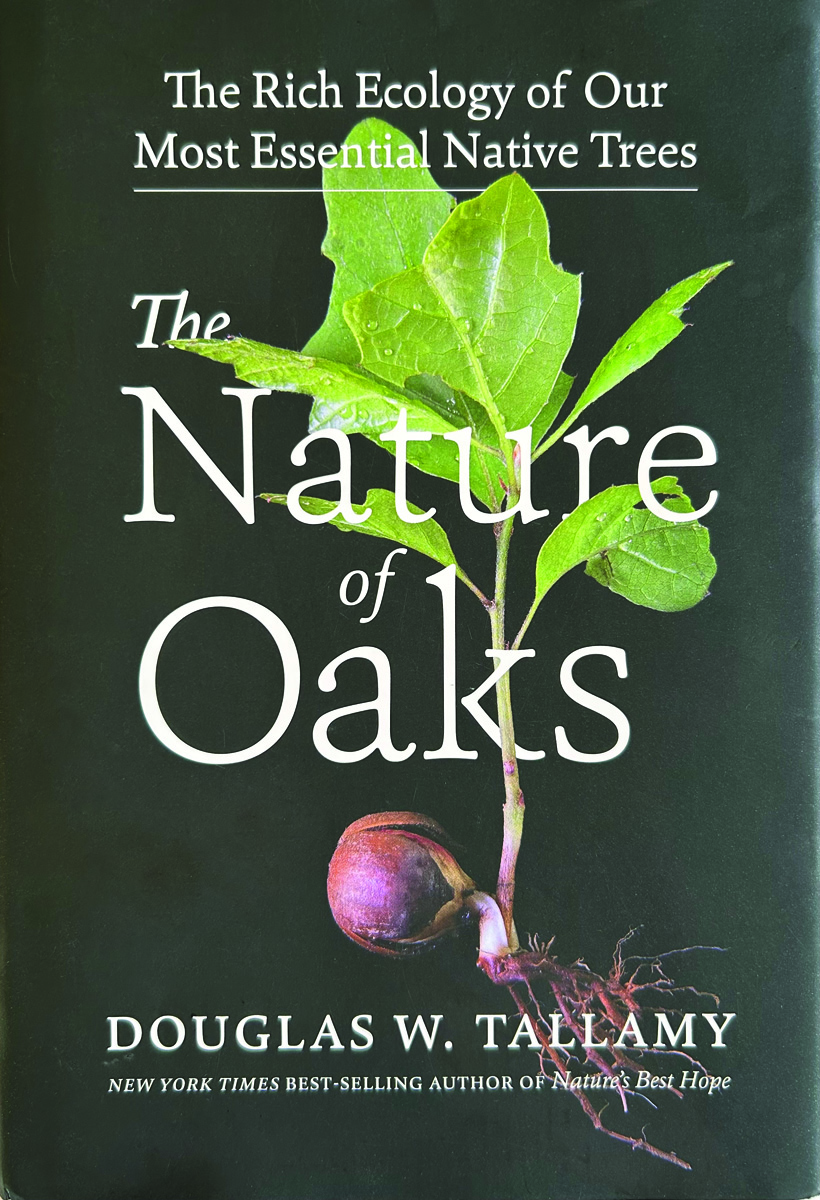
The Nature of Oaks: The Rich Ecology of Our Most Essential Native Trees
Fine Gardening receives a commission for items purchased through links on this site, including Amazon Associates and other affiliate advertising programs.
The Nature of Oaks reveals what is going on in oak trees month by month, highlighting the seasonal cycles of life, death, and renewal. From woodpeckers who collect and store hundreds of acorns for sustenance to the beauty of jewel caterpillars, Doug Tallamy illuminates and celebrates the wonders that occur right in our own backyards. He also shares practical advice about how to plant and care for an oak, along with information about the best oak species for your area.

Rain Bird PATIOKIT Drip Irrigation Patio Watering Kit
Fine Gardening receives a commission for items purchased through links on this site, including Amazon Associates and other affiliate advertising programs.
– Complete 42-piece drip irrigation kit eliminates watering by hand
– Provides drip irrigation for up to 6 planters
– Easy to assemble: just attach to faucet, cut tubing and connect watering devices
– Attaches easily to your outdoor faucet or hose

DeWalt Variable-Speed Cordless Reciprocating Saw
Fine Gardening receives a commission for items purchased through links on this site, including Amazon Associates and other affiliate advertising programs.
You can fit a variety of blades to this saw to cut fallen branches or prune larger limbs from trees in a pinch. It’s fast, tough, easy to use, and extremely versatile.
– 18.31 x 6.13 x 4 inches
– 1-1/8-inch stroke length
– Variable speed trigger with 0-3000 spm








